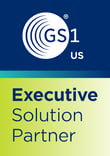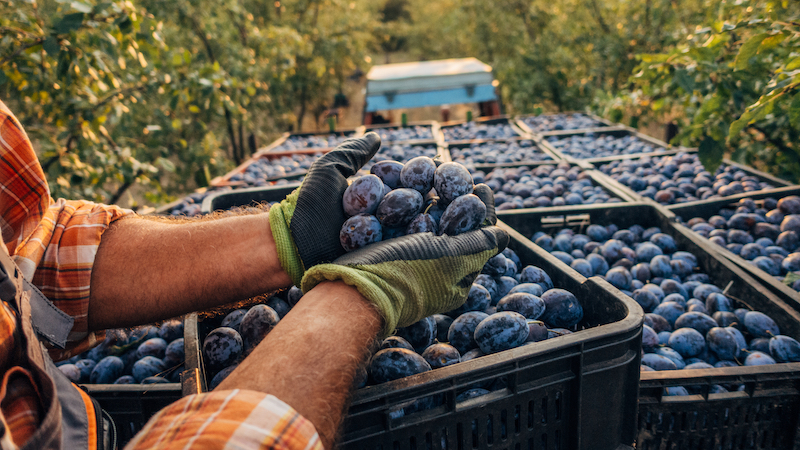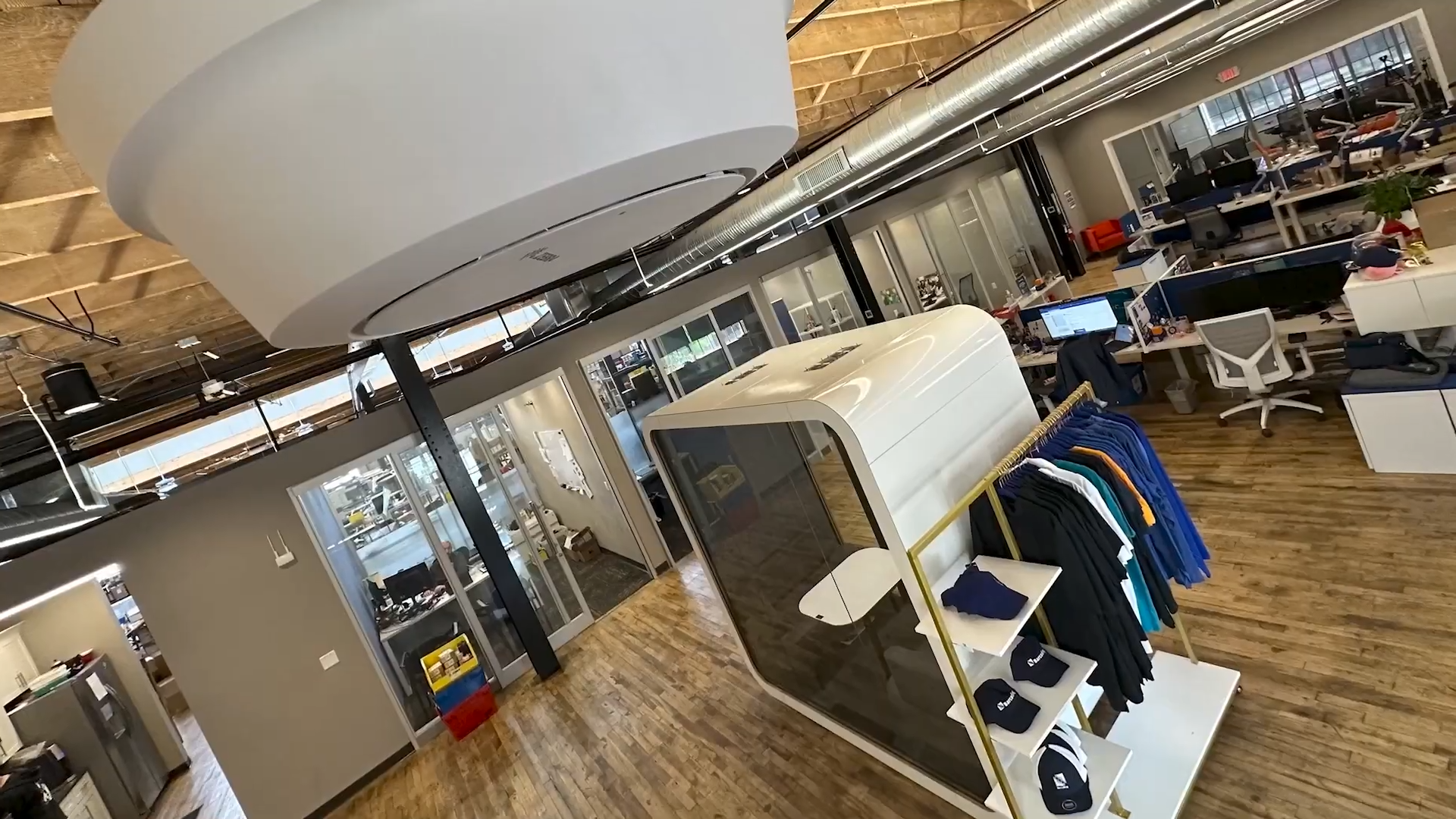What defines a modern food supply chain?
It’s not solely about inventory accuracy and visibility, or the speed and efficiency of every process from farm to fork.
Internet of things (IoT) technologies such RAIN RFID can be pivotal to improving the ways we handle, process, transport, prepare, safeguard, distribute, and sell food. And it’s not merely an exercise in innovation for its own sake.
A truly modern food supply chain is one that empowers all stakeholders, from agricultural producers to people who eat, to minimize risks and optimize outcomes in terms of food quality, value, safety, availability, cost, sustainability, and much more.
Before the pandemic, Americans rarely considered food supply chain issues unless recalls and/or food-borne illness outbreaks arose. Those outbreaks often result in tremendous amounts of wasted food, often both the contaminated and non-contaminated, safe food products—which becomes collateral damage in the food safety fight.
The Food and Drug Administration’s updates to the Food Safety Modernization Act Section 204 (FSMA 204) address safety concerns, and RAIN RFID will likely play a key role in compliance for many businesses across the supply chain. But the technology’s advantages don’t end with food safety.
How RAIN RFID Works
An RFID system typically includes tags, a reader, software, and a database. The RFID reader emits energy at a frequency (900-928 MHz) which “wakes up” the tag to “reply” by providing its ID to the reader. Software, often known as middleware, connects the data collected by the reader and in a meaningful way passes that information along to the backend database.
IoT-connected devices like RAIN RFID readers can easily be integrated into manufacturing, warehousing, distribution, and retail processes. This enables RAIN RFID to identify, capture and share data faster and without risk of human error, and often without interrupting an operation. Plus, RFID readers can capture large quantities of data almost instantly, even without line-of-sight access.
Here are seven areas where stakeholders can benefit by implementing RAIN RFID in food supply chain applications.
1. Preventing Shortages and Stock-Outs
Many Americans experienced the shock of empty store shelves for the first time in 2020, and consumers everywhere learned about the intricacies and vulnerabilities of the food supply chain.
RFID can improve inventory accuracy to the individual, serialized item-level, streamlining reordering processes while still attending to the details. And over time, inventory data capture and analysis can yield data intelligence to improve businesses’ ability to predict demand.
RAIN-enabled process efficiencies allow cycle counts to be performed more frequently with less time and labor along with increased accuracy. Consider, for example, a quick-serve restaurant (QSR) running inventory counts before and after lunch and dinner rush times—and doing so in just a few minutes versus a few hours. They get up-to-the-minute inventory, without pen and clipboard or barcode scanning methods, and with far less risk of human error.
2. Reducing Waste and Spoilage
The U.S. throws away more food than any other country and restaurants, foodservice companies, and grocery stores account for about a third of that waste. With serialized, item-level RFID-enabled food traceability solutions, all stakeholders within the food industry can more effectively identify “expire by” dates through the first-expiry-first-out, or “FEFO,” models.
RFID location tracking using readers installed at gates between manufacturing or storage areas can help manufacturers and food handlers prevent cross contamination of products with allergens like peanuts, gluten, dairy, etc.
3. Improving Response to Foodborne Illness Outbreaks
FSMA 204 zeroes in on food traceability record-keeping requirements specifically for foods on its Food Traceability List (FTL) and products containing those foods. The FTL focuses on common food-borne illness risks, such as E.coli and listeria.
RFID-enabled systems can deliver a one-two punch to outbreaks. First, faster identification and location of recalled products can literally save lives. Second, a more granular response, drilling down to the batch or lot becomes possible, rather than mass recalls. The result? More effective food recalls and less wasted food.
4. Mitigating the Effects of Widespread Labor Shortages
Currently, it’s generally agreed that the U.S. has more job openings than available workers to fill them. It’s a serious problem that touches every part of the food supply chain: farms, processors, distribution and logistics providers, retailers, and restaurants. Most businesses would like to hire more people, but that’s just not possible. What’s the alternative? Doing more with less, of course.
To the worker, this may sound like a terrible idea—but not when businesses use RFID and automation to offload the most tedious, menial tasks, such as:
- Outgoing shipment verification at a processor or distribution center
- In-bound receiving shipment verification at the DC
- Back-of-the-house inventory receiving at a restaurant
- Monitoring and recording of sensor data such as temperature for food items
In the example of the QSR, helping workers stay at the front of the house where they can prepare food and serve customers reduces wait times, improves service, and enhances workers’ on-the-job experience. That means not just happier patrons, but happier workers, which can help prevent employee churn.
5. Supporting Transparency in Stakeholder Relationships
Clear, transparent communications are in every stakeholder’s best interest, whether it’s an interaction between a farmer and a processor, a restaurant and a patron, or a government agency and a company.
Consumers also have a growing interest in food traceability for reasons that go beyond food safety. Concerns over sustainability, provenance, and labor or trade practices all drive a desire for access to more complete product records.
A utomated data capture sets a foundation for reliable, transparent record-keeping, and adherence to GS1 standards ensures interoperability and streamlined communication between trade partners.
utomated data capture sets a foundation for reliable, transparent record-keeping, and adherence to GS1 standards ensures interoperability and streamlined communication between trade partners.
6. Increasing Sustainability
Let’s take a second look at food waste from another point of view: greenhouse gas emissions and climate change. According to the EPA, U.S. food loss and waste generates about 170 million metric tons of carbon dioxide each year. That’s equivalent to about 42 coal-fired power plants. Preventing food waste and loss also protects soil and water.
Growing concerns about pollutants like microplastics are driving demand for businesses to reduce or eliminate single-use packaging, too. Returnable transport items (RTIs) such as pallets and totes, can be an excellent option—but the trick is ensuring their timely return and reuse. RAIN RFID enables the greatest visibility for tracking these RTIs for organizations of all sizes.
7. Controlling Costs
Item-level visibility, waste prevention, and labor reductions all help businesses reduce costs. In the face of rising energy prices and a tight labor market, it’s hard to overestimate the value of efficiency, accuracy and visibility. Everything from optimizing worker scheduling based on shipment information to scheduling promotions around product expiration dates can help squeeze more value out at every stop along the supply chain.
In any industry, it’s just good business to periodically evaluate partnerships to make sure they’re still meeting your needs. Capabilities, experience, capacity, and even values can impact a vendor or partner’s ability to optimally support your growth, and in a quickly evolving supply chain and regulatory environment, you need to know you can count on your partners.
Take a measured, methodical approach to evaluating your technology partner using our free tip sheet. Click here or below to get yours today.



 utomated data capture sets a foundation for reliable, transparent record-keeping, and
utomated data capture sets a foundation for reliable, transparent record-keeping, and 



